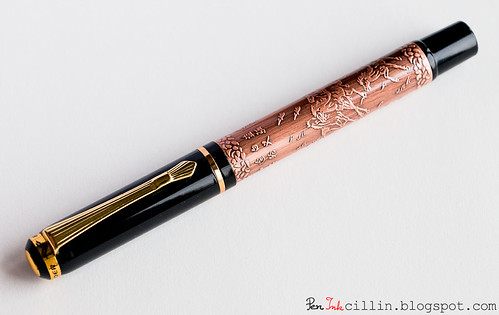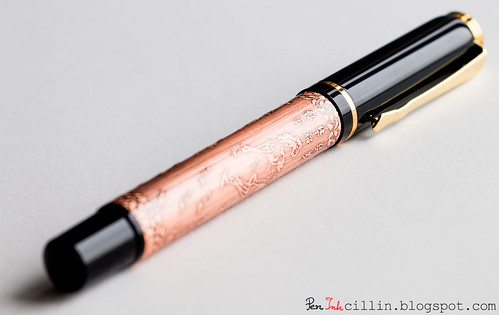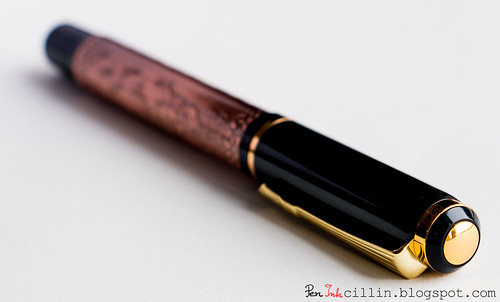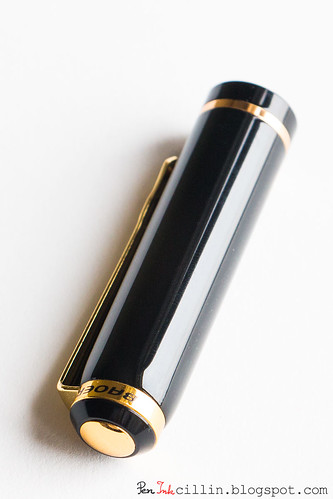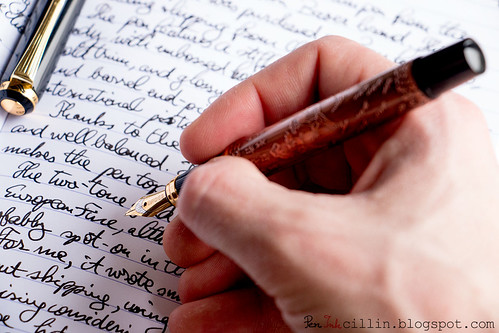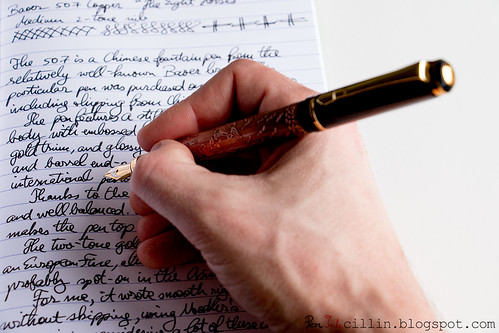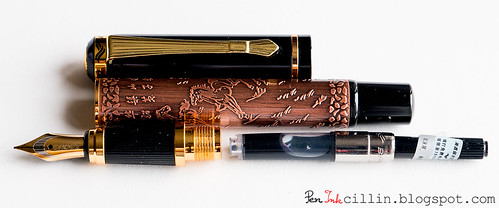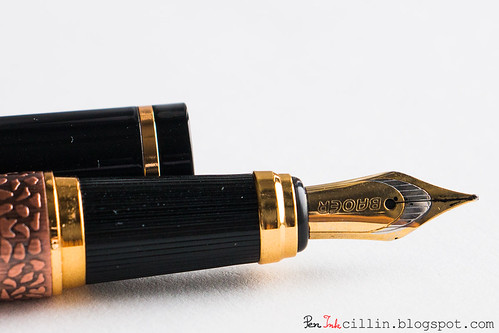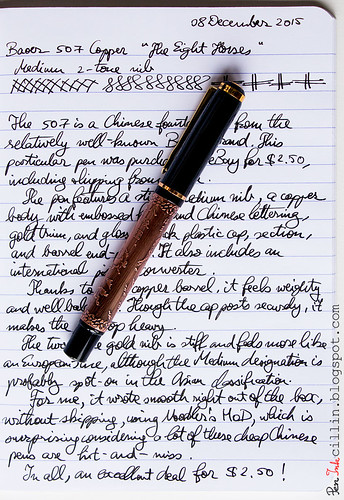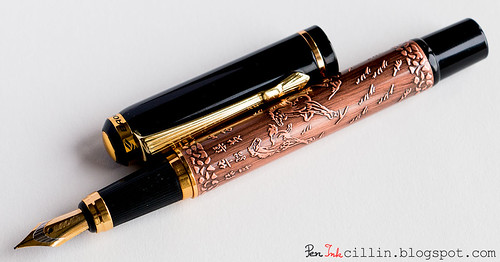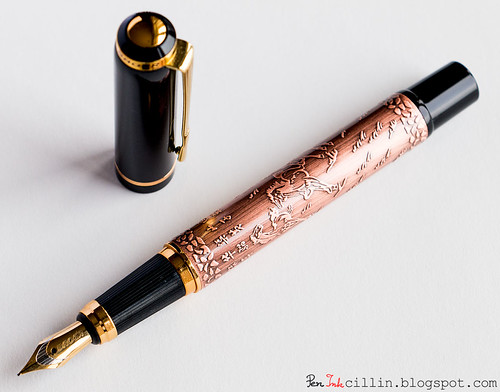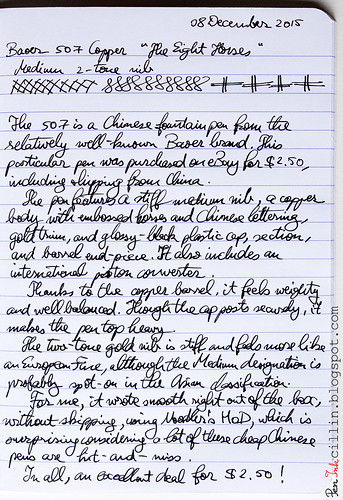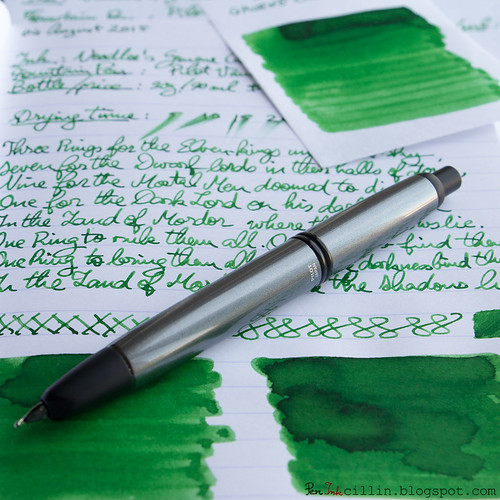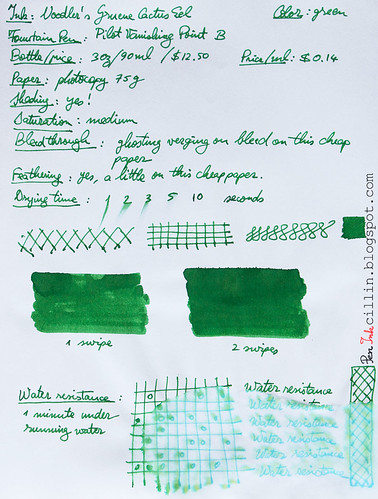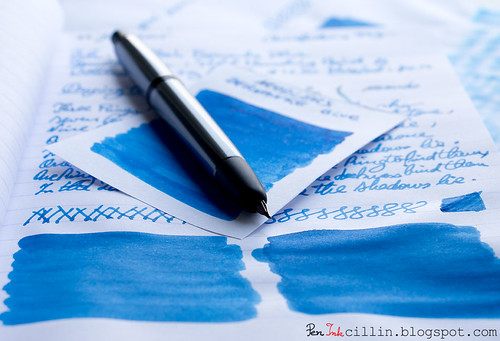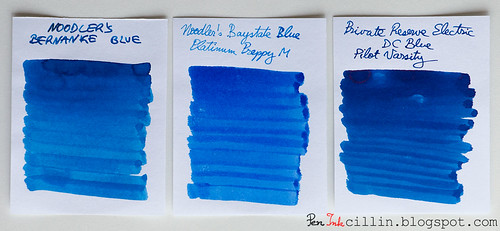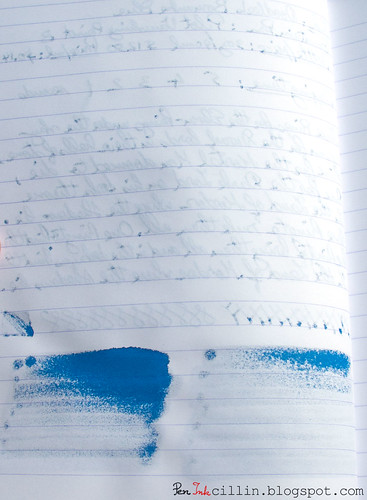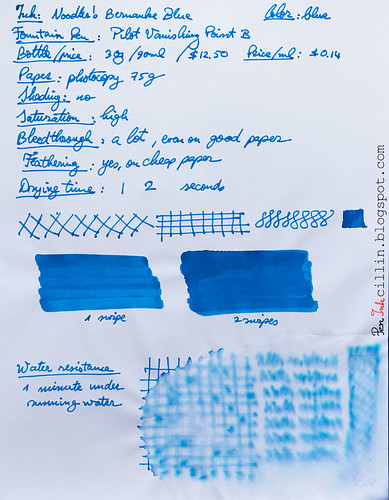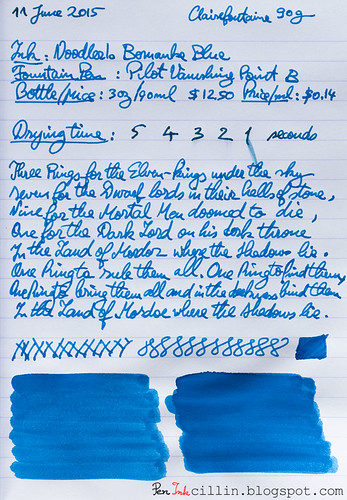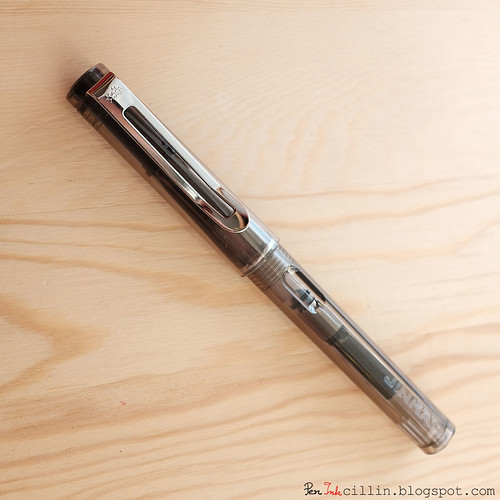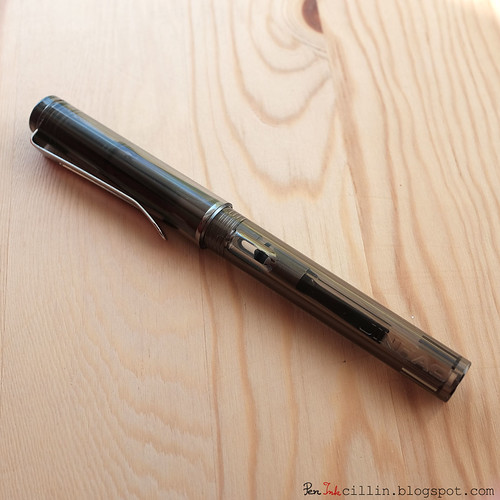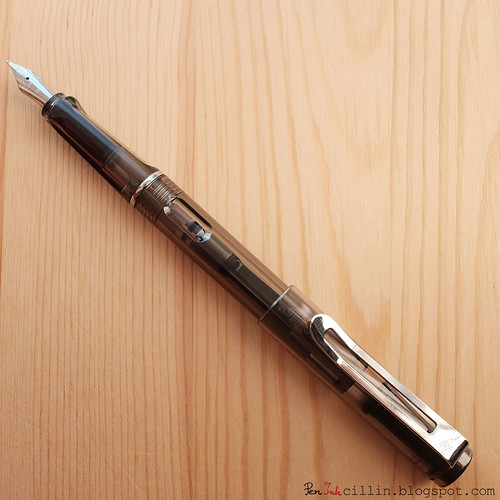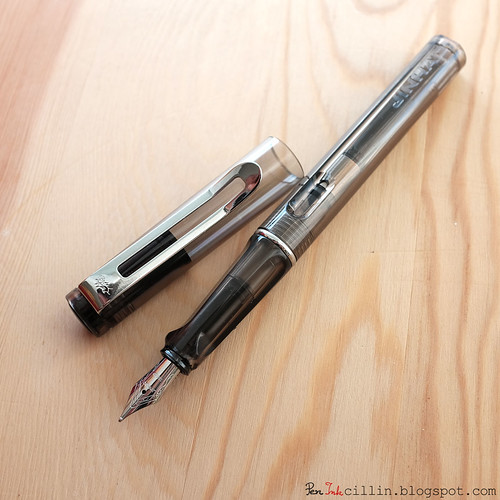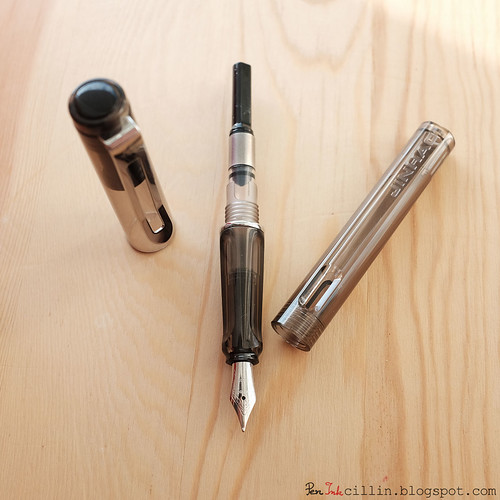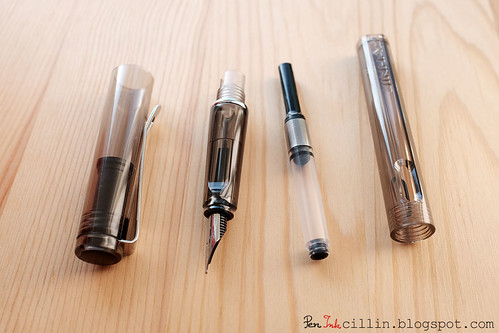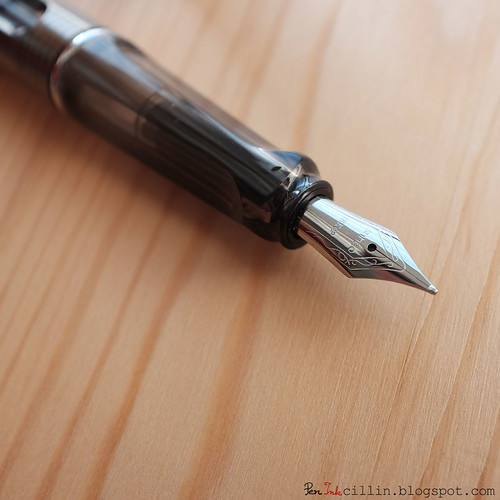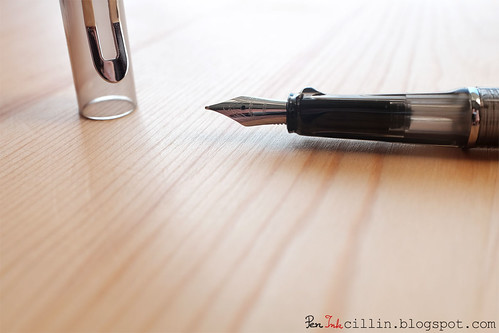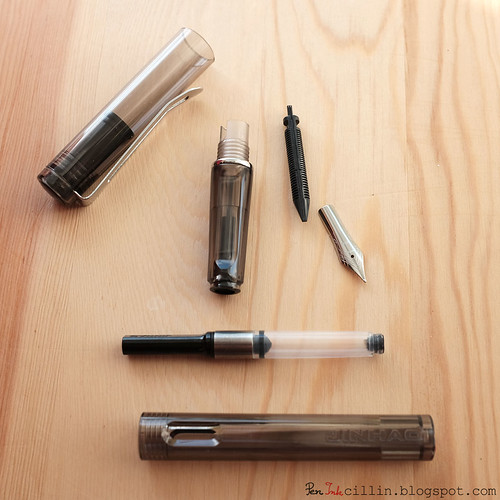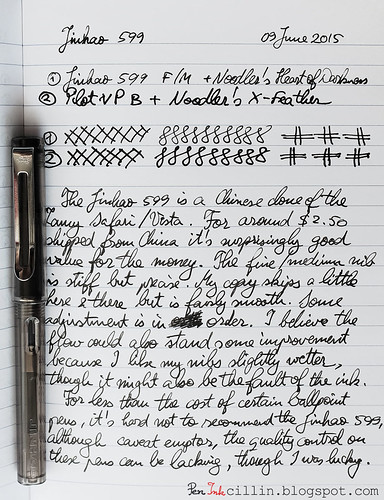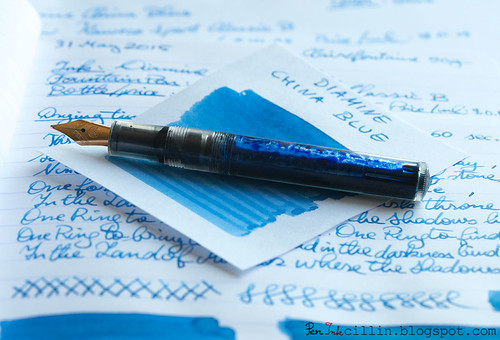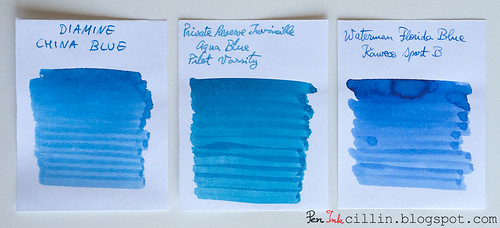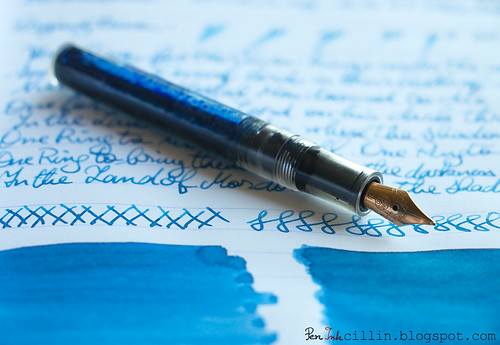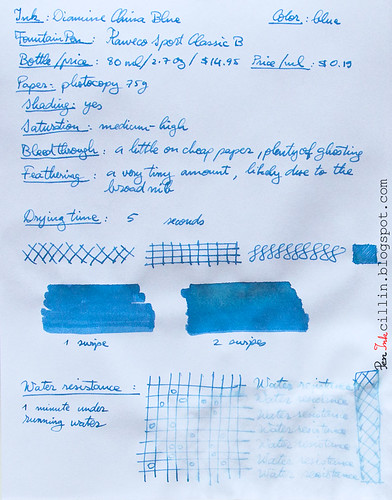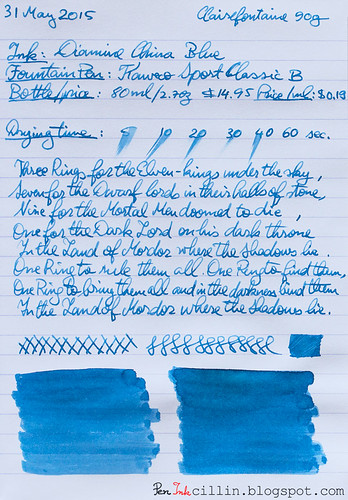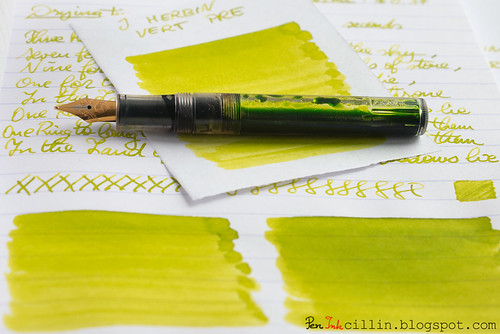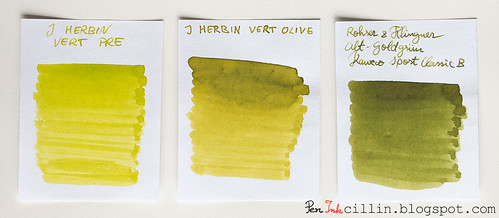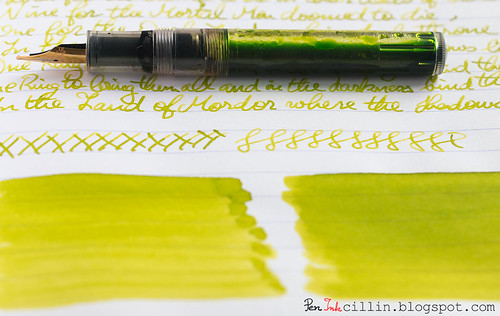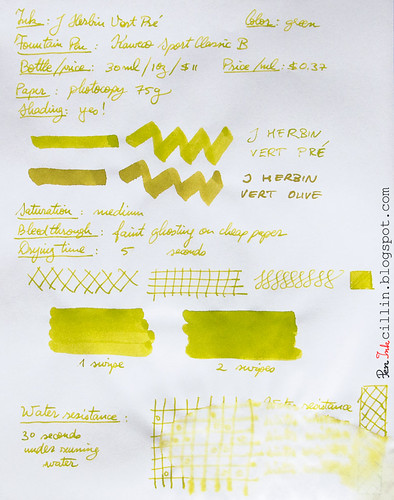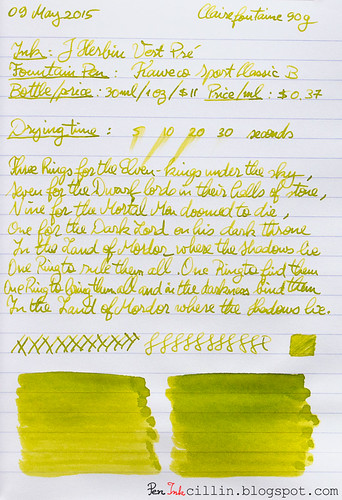What is the Baoer 507?
The Baoer 507 is a fountain pen made by the Chinese Baoer company. If you're wondering how to pronounce "Baoer", you're not the only one. Is it bauer? Bower? Maybe someone can clear this up for me.Either way, Baoer is one of those Chinese brands (apart from Jinhao) which I'd heard of before. So one evening, while fishing for fountain pen deals on eBay, I came across this magnificent specimen featuring a copper embossed barrel. I placed a bid for $2.50 and promptly forgot about it. When the auction ended, I found myself with a $2.50 pen, including shipping. Delivery from China took a while, but I wasn't in any hurry.
Was the Baoer 507 worth my $2.50? You'll find out soon enough but I can tell you this much: it's some of the best $2.50 I've spent.
Packaging
As with the Jinhao 599 before it, I don't remember if it came in a (cardboard) box or not. If it did, I must have thrown it away. For $2.50 I don't have any expectations as far as packaging.Body, construction, and dimensions
The Baoer 507's main feature is its actual copper barrel, embossed with horses, Chinese characters, and other flourishes. It's obviously garish but also very Chinese. Not everyone's cup of tea, I'm sure. I wanted it when I saw it, for the novelty factor.Apart from that, there's a piano-black plastic cap with golden band, finial and clip, as well as a butt-end from the same plastic material.
Here are the Baoer 507's dimensions:
Length capped: 135 mm / 5.4 in
Length uncapped: 122 mm / 4.8 in
Length posted: 165 mm / 6.5 in
Cap length: 57 mm / 2.25 in
Here are the weights for the Baoer 507, compared to other fountain pens I've tested:
Baoer 507 (with cap) - 34.6 g - 1.22 oz
Baoer 507 (without cap) - 21.7 g - 0.76 oz
Jinhao 599 (with cap) - 17.8g - 0.63oz
Jinhao 599 (without cap) - 10.5g - 0.37oz
Pilot Vanishing Point (with cartridge and blind cap) - 30.5g - 1.08oz
TWSBI 530 (no ink) - 25.7g - 0.91oz
Lamy AL-Star (with converter) - 21.8g - 0.77oz
Noodler's Ahab (no ink) - 18.8g - 0.66oz
Pilot Prera (with converter) - 16.1g - 0.56oz
Right off the bat you'll notice 2 things: its dimensions are very similar to the Jinhao 599 (an all-plastic pen) at double the weight. Its weight, in fact, is even greater than the Pilot Vanishing Point. This makes the Baoer 507 a very hefty pen indeed.
In terms of construction, the Baoer 507 seems to be pretty well built. There are no seams or rough edges, and everything is put together nicely. The piano-black finish is slick, while the golden trim doesn't look cheap, although it is a little more than I like.
The main attraction is the copper embossed body and I think it matches the piano-black cap and end piece rather well, though I'm not so sure about the gold accents around the cap. The barrel isn't exactly naked copper, instead seems to be covered in a thin layer of lacquer or some such.
The cap features a gold metal band at either end, as well as a gold finial and a gold clip resembling those found on Pelikan pens. The gold band near the finial has "BAOER" inscribed.
The cap is a snap-on affair and I'm particularly impressed by how securely and authoritatively it snaps shut. This cap won't come off accidentally. The downside is that it's hard for me to pop the cap off with one hand by holding the barrel in the hand and pushing with my thumb against the bottom of the clip. The reason is that the clip ends in a sharp point that will pierce the skin of my thumb before the cap breaks contact.
Speaking of the clip, it is rather stiff, with some pretty strong tension in it. While it is very secure clipped to a shirt pocket, it's not easy to clip it using one hand. Due to that tension, and how the clip makes contact with the cap (via a tiny metal ball), you will need to spread it apart using your other hand. Well, at least it won't come off easily.
How about posting the cap? Some pens work well posted, while others are better unposted. The Baoer 507 feels very well balanced in my hand, without posting the cap.
Due to the heavy weight of the pen itself, I found that posting the cap disturbs the balance and makes it top-heavy, so that doesn't work for me.
If you are still determined to post the cap, you'll be happy to know that it posts very securely on the end. The butt seems to be very well designed with this intent, and while the cap is secured via friction, it's a tight but smooth fit.
The Baoer 507 comes with an international piston converter. I will use this opportunity to once again express my displeasure with higher-regarded brands who refuse to include converters with their significantly more expensive pens.
One last thing I'd like to direct your attention to in the picture above is the metal threads of the section. Yeah, this thing is sturdy.
The nib
My Baoer 507 has a medium/fine nib, and it's quite pretty in two-tone iridium-gold. I'm not sure I fancy the font they used to inscribe "BAOER", though. There's no nib thickness designation. Also, I'm fairly sure the nib isn't real gold. Just saying.The section is black plastic with lengthwise grooves. While this marginally improves the grip, I think I would have preferred a glossy section. The section ends in a necked down gold ring/fitting.
Unfortunately I didn't think to take pictures of the feed, and it's pretty late at this point in the review, but you're not missing much. The feed is a standard finned plastic affair, nothing to get excited about. It does its job well enough.
But does it write?
I'm happy to say that I hit the jackpot with the Baoer 507. The nib is a hard nail, without any flex, but it writes very well and very smoothly.While the nib isn't marked, it feels to me like an Asian medium or a European fine/extra fine.
I loaded the Baoer 507's converter with Noodler's Heart of Darkness (my go-to ink for testing fountain pens) and it doesn't skip one bit. The pen and the ink are a very good match.
Once, I left the 507 unused for 5 days and it wouldn't start again. Priming it by twisting the piston and soaking the feed with some ink got it started again and it wrote without skipping a beat ever since. It looks like with regular use (daily or every other day) it won't dry out, which is pretty good, on par with pens 1-2 orders of magnitude more expensive. This tells me that the cap has a pretty decent seal.
Bottom line is that the Baoer 507 writes a lot better than both the Jinhao X750 and the Jinhao 599 I tested previously, and almost as well as the Pilot Metropolitan. Now obviously, it's all in the luck of the draw. The problem with cheap pens is that quality control is hit-and-miss. So you might get lucky and score a sweet-writing nib, or less lucky with an atrocious nib, as was the case with the Jinhao X750. But for $2.50 it's worth the gamble.
Final words
I am pleasantly surprised by the Baoer 507. I bought it for the novelty factor of the copper embossed barrel, never expecting it to perform worth a damn. Well, it obviously exceeded my very low expectations, and then some! You just can't get a real fountain pen (with a metal body, tight construction, piston converter, and decent nib) for much lower than $2.50.I highly recommend trying one, if the style appeals to you. You could try to snag one on eBay for close to nothing but with a long delivery time, or you could do me a small kindness and buy one from my Amazon affiliate link (I get a tiny commission of the sale with no cost to you) at a higher cost and potentially faster delivery, though it might still arrive from China.
Below is the full, unobscured writing sample for your perusal.

